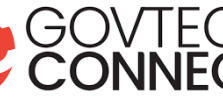Non-invasive Pan-Cancer Detection Method
Hybrid Computer Tomography Scanning System
Single Scan Bright-blood and Dark-blood Phase Sensitive Inversion Recovery (PSIR) Late Gadolinium Enhancement (LGE) for Cardiovascular Magnetic Resonance (CMR) Imaging
Isotopes of Alpha Ketoglutarate and Related Compounds for Hyperpolarized MRI Imaging
This technology includes 1-13C-ketoglutarate which can be used for imaging the conversion to hydroxyglutarate (HG) or Gln in cancer cells with an IDH1 mutations by hyperpolarized MRI. The ability to detect the status of IDH1 mutations is clinically prognostic for multiple cancers. These exciting observations are limited by two factors, the major one being that the natural abundance of 13C at position C5 overlaps with 1-13C-2-hydroxyglutarate peak, which limits the sensitivity of analysis and prevents simultaneous observations of HG and Gln formation.
Producing Isotropic Super-Resolution Images from Line Scanning Confocal Microscopy
This technology includes a microscopy technique that produces super-resolution images from diffraction-limited images obtained from a line scanning confocal microscope. First, the operation of the confocal microscope is modified so that images with sparse line excitation are recorded. Second, these images are processed to increase resolution in one dimension. Third, by taking a series of such super-resolved images from a given sample type, a neural network may be trained to produce images with 1D super-resolution from new diffraction-limited images.
DeePlexing – Extending Imaging Multiplexity Using Machine Learning
Spatial proteomics and transcriptomics are fast-emerging fields with the potential to revolutionize various branches of biology. In the last five years, various multiplex immunofluorescence and immunohistochemistry imaging methods have been developed to stain 5-60 different protein markers in a given tissue. Nonetheless, most of these techniques are iterative and can image a maximum of 3-8 markers in a single cycle, resulting in processing time of several hours to days.
Machine Learning and/or Neural Networks to Validate Stem Cells and Their Derivatives for Use in Cell Therapy, Drug Delivery, and Diagnostics
Many biological and clinical procedures require functional validation of a desired cell type. Current techniques to validate rely on various assays and methods, such as staining with dyes, antibodies, and nucleic acid probes, to assess stem cell health, death, proliferation, and functionality. These techniques potentially destroy stem cells and risk contaminating cells and cultures by exposing them to the environment; they are low-throughput and difficult to scale-up.
Systems and Methods to Automatically Detect Ellipsoid Zone Loss in SD-OCT Imaging
Summary:
The National Eye Institute (NEI) seeks research co-development partners and/or licensees for an automatic deep learning-based algorithm to detect and quantitate ellipsoid zone (EZ) loss in Spectral Domain Optical Coherence Tomography (SD-OCT) images.
NIH Wins GOVTECH CONNECT’s Digital Health Transformation Award
The National Institutes of Health (NIH) Enterprise Technology Transfer (ETT) system has been selected as a GOVTECH CONNECTS’s Digital Health Transformation Award Recipient.

